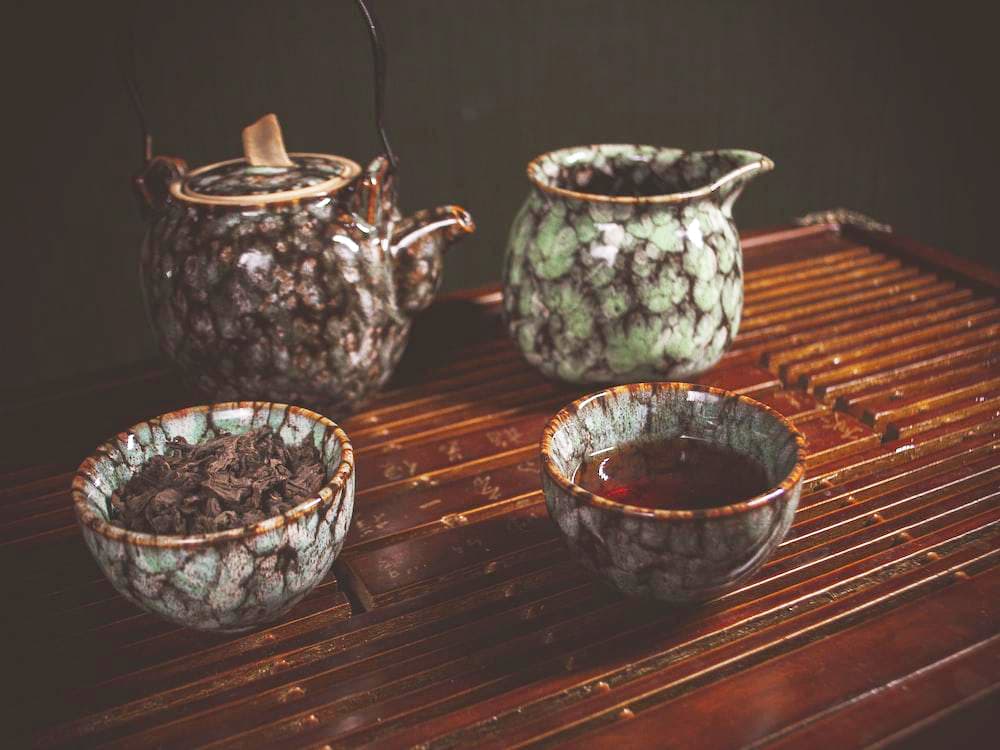Nepal coffee, with its aromatic flavors and rich cultural heritage, is making waves in the global market. This humble beverage is gaining recognition for its unique flavor profile and exceptional quality.
In this article, we will delve into the world of Nepal coffee, exploring its fascinating history, distinctive characteristics, and the impact of altitude on its taste. We will also take a journey through the top coffee-growing regions in Nepal and unveil the sustainable farming practices that contribute to its excellence.
For centuries, Nepal has been cultivating coffee plants, but it is only in recent years that it has gained international acclaim. The growth of Nepal’s coffee industry can be attributed to various factors such as government support, investments in infrastructure, and increasing demand from specialty coffee enthusiasts around the world. As a result, Nepal now stands among the elite ranks of countries known for producing exceptional coffees.
What sets Nepali coffee apart from other varieties is its unique flavor profile. The combination of distinct regional characteristics and meticulous processing methods results in an unparalleled cup of java. From fruity notes to floral aromas and earthy undertones, each sip offers a delightful adventure for the taste buds. Moreover, Nepali coffee owes much of its flavor complexity to the country’s diverse microclimates and varying altitudes where it is grown.
Join us as we explore not only the flavor journey but also uncover how Nepal’s elevation enhances the quality of its coffee. We will take a closer look at different growing regions known for their distinct terroir and discuss how altitude impacts factors such as bean density and sweetness. Through this exploration, we hope to give you a deeper understanding of why Nepali coffee has become a celebrated gem in the global coffee scene.
So grab your favorite mug and get ready to embark on a tantalizing journey through Nepal’s rich coffee culture. From farm to cup, there are countless stories waiting to be discovered, and we invite you to be part of this extraordinary adventure.
The Rich Heritage of Coffee in Nepal
Coffee has a rich history in Nepal that dates back several centuries. While the country is commonly associated with its majestic mountains and breathtaking landscapes, Nepali coffee is a hidden gem waiting to be discovered by coffee enthusiasts around the world. In this section, we will delve into the fascinating history of coffee in Nepal, tracing its roots and highlighting its significance.
The Introduction of Coffee to Nepal
Coffee was first introduced to Nepal during the mid-19th century when a group of Rana Prime Ministers returned from Europe with coffee plants. These plants were initially grown as ornamental trees but soon gained popularity as a cash crop due to their adaptability to the Nepali climate and soil conditions. Today, Nepali coffee is produced in various regions across the country, contributing to both the national economy and local communities.
The Role of Arabica Coffee in Nepali Culture
Arabica coffee, specifically the Coffea arabica variety, is the predominant species grown in Nepal. This variety is highly regarded for its superior quality and unique flavor profile. Nepali farmers take pride in cultivating Arabica beans due to their cultural significance and economic value. The cultivation of Arabica coffee has become an integral part of many traditional farming practices and has played a significant role in shaping local livelihoods.
Nepal’s Organic Coffee Legacy
One notable aspect of Nepal’s coffee industry is its commitment to organic farming practices. The majority of coffee farms in Nepal are certified organic, meaning that they are free from synthetic fertilizers or pesticides. This commitment to organic farming has garnered international recognition for Nepali coffee producers and has contributed greatly to their marketability and demand overseas.
The Unique Flavor Profile of Nepali Coffee
Nepali coffee is renowned for its unique flavor profile, which sets it apart from other types of coffee in the global market. The distinctive characteristics of Nepali coffee make it a favorite among coffee enthusiasts and connoisseurs alike.
One of the key factors that contribute to the unique flavor profile of Nepali coffee is its diverse range of microclimates and soil conditions. The various growing regions in Nepal offer different altitudes, temperatures, and moisture levels, which greatly influence the taste and aroma of the coffee beans. This diversity in growing conditions allows for a wide array of flavors to emerge, ranging from fruity and floral to nutty and chocolatey.
Another aspect that adds to the distinctive quality of Nepali coffee is its organic farming practices. Many Nepali farmers embrace sustainable agriculture techniques, such as shade-grown farming and manual harvesting, which help preserve the natural environment while enhancing the overall flavor of the beans. These farming practices contribute to a cleaner cup profile, making Nepali coffee an excellent choice for those who appreciate high-quality coffee with minimal environmental impact.
Furthermore, the processing methods used for Nepali coffee also shape its unique flavor characteristics. Many farmers employ traditional processing techniques such as sun-drying or wet processing, allowing for greater control over how the flavors are developed during post-harvesting stages. The careful execution of these methods highlights the nuanced flavors and enhances the complexity of Nepali coffee.
The Impact of Altitude on Nepal Coffee
Altitude plays a crucial role in shaping the quality and characteristics of coffee beans, and Nepal’s unique geography offers optimal conditions for producing high-quality coffee. The impact of altitude on Nepal Coffee is undeniable, as it enhances the flavor profile and overall quality of the beans.
One major advantage of growing coffee at higher altitudes is the slower maturation process. As coffee plants grow in cooler climates, they take longer to ripen, allowing more time for complex flavors to develop within the beans. This extended maturation period results in a greater depth of flavor and aroma in Nepali coffee compared to beans grown at lower elevations.
Furthermore, altitude influences the density and size of coffee beans. At higher elevations, lower oxygen levels and cooler temperatures cause coffee cherries to develop more slowly. As a result, the beans tend to be denser and smaller in size compared to those grown at lower altitudes. This denser composition contributes to a more intense flavor profile as it allows for better extraction during the brewing process.
In addition to flavor development, altitude also provides natural protection against pests and diseases commonly associated with low-lying regions. The cooler climate at higher elevations creates an inhospitable environment for pests such as coffee berry borers or fungal diseases that can affect coffee crops. This allows farmers in Nepal’s mountainous regions to minimize pesticide use and adopt more sustainable farming practices.
To summarize, altitude plays a vital role in enhancing the quality of Nepal Coffee by influencing flavor development, bean density, and protecting against pests. The unique geography of Nepal provides ideal conditions for growing specialty coffee with distinct and exceptional characteristics. In the next section, we will explore the top coffee-producing regions in Nepal where these high-quality beans are cultivated.
Nepal Coffee Growing Regions
Nepal is home to several coffee-growing regions that have gained recognition for producing high-quality beans. These regions are located at different elevations and have their own unique climate and soil conditions, which contribute to the distinctive flavors found in Nepali coffee.
Eastern Region: Taplejung
Taplejung, located in the eastern region of Nepal, is known for its exceptional Arabica coffee production. The region’s ideal altitude range of 1,200 to 2,100 meters above sea level provides the perfect conditions for slow ripening and flavor development. The coffee produced here is characterized by its floral and fruity notes, with hints of citrus and caramel.
Central Region: Nuwakot
In central Nepal, the district of Nuwakot has emerged as a prominent coffee-growing area. Situated at an elevation of around 1,500 meters, Nuwakot benefits from a temperate climate and fertile soil enriched by natural minerals. Coffee from this region showcases a balanced flavor profile with notes of cocoa, hazelnut, and spice.
Western Region: Gulmi
The western region of Nepal is home to Gulmi, another major coffee-producing area. With altitudes ranging from 980 to 1,500 meters above sea level, Gulmi experiences cooler temperatures compared to other parts of the country. This slower maturation process contributes to the distinct taste of Gulmi coffee, which exhibits a bright acidity and flavors reminiscent of red berries and chocolate.
These are just some of the top coffee-growing regions in Nepal that have caught the attention of specialty coffee enthusiasts worldwide. Each region offers its own unique terroir and microclimate, resulting in diverse flavor profiles that can be explored and appreciated by coffee lovers.
As demand for Nepali coffee continues to grow globally, these regions play a vital role in meeting market demands while also contributing to the local economy. Coffee production provides income and employment opportunities for many rural communities in Nepal, helping to improve their standard of living.
In the next section, we will delve into the art of coffee farming in Nepal and explore the sustainable practices and farming techniques that are employed to ensure the production of high-quality beans.
The Art of Coffee Farming in Nepal
Coffee farming in Nepal is an art that has been passed down through generations, with a deep respect for the land and a commitment to sustainable practices. Nepali coffee farmers have embraced techniques that not only produce exceptional beans but also prioritize environmental conservation.
One of the key sustainable practices in coffee farming in Nepal is shade-grown cultivation. Farmers understand the importance of maintaining the natural habitat for birds and other wildlife, as they contribute to pest control and pollination. By planting coffee plants under the shade of larger trees, farmers create a harmonious ecosystem that supports biodiversity and reduces the need for chemical pesticides.
Another sustainable technique employed by Nepali coffee farmers is organic farming. Many coffee farms in Nepal are certified organic, meaning that no synthetic fertilizers or chemicals are used in the cultivation process. Instead, farmers use natural fertilizers such as compost and animal manure to enrich the soil. This not only ensures a healthy ecosystem but also guarantees that the final product is free from harmful residues.
Additionally, water management plays a crucial role in sustainable coffee farming in Nepal. Farmers employ techniques such as drip irrigation systems to efficiently use water resources and minimize wastage. This helps conserve water, particularly during dry seasons when water availability may be limited. Implementing these methods not only benefits the environment but also leads to higher quality coffee beans with more concentrated flavors.
Brewing Nepali Coffee
Nepali coffee has gained international recognition for its unique flavor profile and exceptional quality. To fully appreciate the rich flavors of Nepal coffee, it is important to know the secrets to preparing the perfect cup. In this section, we will delve into the brewing methods and techniques that bring out the best in Nepali coffee.
Brewing Methods
There are various brewing methods that can be used to make Nepali coffee, each offering a different tasting experience. One popular method is the pour-over method, which involves pouring hot water over coffee grounds in a filter cone. This method allows for better control over the brewing time and ensures a clean and balanced cup of coffee.
Another common brewing method is using an espresso machine. This method produces a concentrated shot of coffee with complex flavors and a creamy texture. It is recommended to use freshly ground Nepali coffee beans for espresso to achieve optimal results.
Grind Size and Water Temperature
The grind size of the coffee beans plays a crucial role in determining the taste of the brewed coffee. For pour-over methods, a medium-coarse grind size is generally preferred as it allows for better extraction of flavors without over-extracting bitterness. On the other hand, espresso requires a fine grind size to maximize surface area contact with water and achieve proper extraction.
Water temperature also significantly impacts the overall flavor profile of Nepali coffee. The ideal water temperature for brewing ranges between 195°F (90°C) and 205°F (96°C). Water that is too hot can result in an overly bitter cup, while water that is too cold may under-extract flavors.
Experimentation and Personal Preferences
Brewing coffee is both an art and a science, and everyone has their own preferences when it comes to taste. While there are general guidelines for brewing Nepali coffee, it’s important to experiment with different variables such as brew time, coffee-to-water ratio, and brewing equipment to find the perfect cup that suits your taste buds.
Nepali Coffee Culture
Coffee culture is an integral part of the vibrant and diverse society of Nepal. The country’s burgeoning coffee scene offers a unique experience for coffee enthusiasts, where they can immerse themselves in the rich flavors, traditions, and rituals surrounding this beloved beverage.
One of the highlights of Nepal’s coffee culture is its thriving cafe culture. As you traverse the streets of Kathmandu, Pokhara, or other major cities, you will find a plethora of cozy cafes tucked away on bustling streets or nestled amidst serene surroundings.
These cafes not only offer a wide variety of local and international coffee options but also serve as creative spaces for artists, musicians, and writers to gather and showcase their talents. Additionally, many cafes host latte art competitions, cupping sessions, and workshops on brewing techniques to engage and educate coffee enthusiasts.
In addition to cafes, Nepal hosts various coffee festivals throughout the year that further celebrate the country’s coffee culture. These festivals bring together farmers, roasters, baristas, and consumers to share their passion for Nepali coffee.
Visitors can indulge in tasting sessions featuring different varieties of beans from various regions while enjoying live music performances and cultural events. These events provide a platform for collaboration and knowledge sharing among industry professionals while promoting indigenous Nepali coffees on both domestic and international levels.
| Key Features | Coffee Culture in Nepal |
|---|---|
| Cafe Culture | Thriving cafe scene with cozy spaces for artists to gather. |
| Coffee Festivals | Festivals that celebrate Nepali coffee with tasting sessions and cultural events. |
| Educational Workshops | Workshops on brewing techniques and latte art competitions to engage and educate enthusiasts. |
Nepal also boasts a tradition of coffee ceremonies that reflect the country’s deep-rooted culture and hospitality. These ceremonies are an opportunity for locals to connect, socialize, and showcase their warm hospitality to guests. In these gatherings, coffee is roasted in a traditional Nepali way, ground manually using a wooden mortar and pestle, and brewed in brass or clay pots.
It is served in small cups with delicately sweetened yak butter or spices like cardamom or cinnamon. The aroma of freshly roasted coffee fills the air, enhancing the overall sensory experience.
Immersing oneself in Nepal’s coffee scene means not only enjoying the delightful flavors but also getting to know the people behind each cup. From passionate farmers who tirelessly nurture their coffee plants to talented baristas who masterfully craft each drink, every cup tells a story that reflects the dedication and craftsmanship involved in its creation.
Whether you’re a local resident or a traveler passing through Nepal, embracing the coffee culture allows you to unlock hidden gems and form connections beyond just the beverage itself. Nepal offers an enchanting world of flavors, traditions, and stories waiting to be discovered within its bustling cafes, lively festivals, and welcoming communities. So grab a cup of Nepali coffee, take a sip, and immerse yourself in this captivating journey through the country’s vibrant coffee scene.
The Social and Economic Benefits of Nepal Coffee
Nepal’s coffee industry not only offers a unique and flavorful product, but it also brings significant social and economic benefits to local communities. Through the cultivation and production of coffee, Nepal has been able to create opportunities for employment, improve the standard of living, and support sustainable development.
Firstly, the growth of the coffee industry in Nepal has contributed to employment opportunities for local residents. Coffee farming requires considerable labor throughout various stages such as planting, harvesting, and processing. This provides a source of income for many people living in rural areas who would otherwise struggle to find work. With more individuals engaged in coffee cultivation, families are able to secure a stable livelihood and reduce their dependence on traditional agriculture or migration for labor.
Moreover, the coffee industry has brought about an improvement in the standard of living among coffee-growing communities. As Nepal’s specialty coffee gains recognition and demand internationally, farmers are able to command higher prices for their high-quality beans. This increased income allows farmers to invest in better farming practices, acquire modern equipment, and access necessary resources. In turn, these improvements contribute to enhanced crop yields and overall productivity within the industry.
Furthermore, Nepal’s focus on sustainable practices has helped promote environmental preservation while benefiting local communities. Many farmers have adopted organic farming methods that reduce reliance on chemical pesticides and fertilizers. By prioritizing sustainable practices, not only do they protect natural resources like soil and water quality but also ensure the long-term viability of their crops. Additionally, this emphasis on sustainability resonates with conscious consumers who value ethically produced goods.
From Farm to Cup
Nepali coffee has gained significant recognition in recent years for its exceptional quality and unique flavor profile. As more people around the world discover the delights of Nepal coffee, it is essential to understand the journey it takes from farm to cup, tracing its path through the global supply chain.
- Cultivation and Harvesting: The process begins with coffee cultivation and harvesting on Nepali coffee farms. Local farmers utilize sustainable practices to ensure the growth of healthy coffee plants. The altitude at which these farms are located plays a crucial role in enhancing the flavor and quality of the coffee beans.
- Processing: After harvesting, the coffee cherries undergo a meticulous processing phase. This typically involves either a dry or wet method, depending on the preference of local farmers. Both methods have their distinct advantages and contribute to shaping the final flavor profile of Nepali coffee.
- Exporting: Once processed, Nepali coffee is prepared for exportation. Exporters play a significant role in connecting local farmers with international markets by ensuring that high-quality standards are maintained throughout the supply chain. They handle packaging, labeling, and arranging transportation for timely delivery.
- Importing and Roasting: Once imported into different countries, Nepali green coffee beans are purchased by local roasters who are eager to unlock their potential flavors through expert roasting techniques. The artistry involved in roasting Nepali coffee requires precision and understanding of each batch’s unique characteristics.
- Distribution and Brewing: Finally, roasted Nepali coffee makes its way to wholesalers, retailers, cafes, and consumers worldwide. These distribution points bring Nepal’s unique brew into homes and cafes where skilled baristas prepare it using various brewing methods like pour-over, espresso machines, or French presses.
Embracing Nepal’s coffee culture goes beyond savoring its robust flavors; it involves appreciating the craftsmanship and dedication displayed at every step of the global supply chain. From the hard work of Nepali farmers to the expertise of roasters and baristas, Nepal coffee‘s journey from farm to cup is a testament to the passion and commitment surrounding this celebrated gem in the world of coffee.
Conclusion
In conclusion, Nepal coffee is a celebrated gem that awaits exploration by coffee connoisseurs and enthusiasts around the world. With its rich heritage, unique flavor profile, and the impact of altitude on quality, Nepali coffee stands out as a distinctive and high-quality brew. The top coffee-producing regions in Nepal offer a diverse range of flavors and characteristics, thanks to the country’s diverse geography.
Furthermore, the art of sustainable coffee farming practiced in Nepal ensures that each cup of Nepali coffee is not only delicious but also supports local communities. Through supporting local farmers and their families, Nepal coffee contributes to the social and economic development of the region.
Brewing a perfect cup of Nepali coffee requires attention to detail and an understanding of its unique qualities. By embracing this process, coffee lovers can truly immerse themselves in the rich Nepali coffee culture. Whether it’s exploring local cafes or experimenting with different brewing methods at home, Nepal offers an exciting journey for those seeking a new and exquisite coffee experience.
From farm to cup, the journey of Nepal coffee in the global supply chain is one that highlights its value and potential. As more people discover and appreciate the flavors and quality of Nepali coffee, its popularity continues to rise in the global market. With its distinct characteristics and sustainable practices, Nepal has firmly established itself as a key player in the specialty coffee industry.
Frequently Asked Questions
Does Nepal have good coffee?
Nepal does have good coffee, although it may not be as well-known globally compared to other coffee-producing countries. The high altitude and diverse climate of the country’s Himalayan region provide favorable conditions for growing specialty coffee beans.
Nepali coffee is often characterized by its unique flavor profile, which can include fruity, floral, and earthy notes. In recent years, the quality of Nepal’s coffee has been recognized internationally, and specialty coffee shops in major cities around the world are increasingly offering Nepali coffee as a distinct and flavorful option.
Does Nepal have coffee?
Yes, Nepal does have coffee. Coffee cultivation in Nepal has been gaining prominence over the past few decades. The country’s topography, with its mountainous regions and fertile valleys, provides suitable conditions for growing coffee plants.
Many farmers in Nepal have shifted from traditional crops to cultivating coffee due to its increasing demand and profitability. However, it is important to note that the scale of coffee production in Nepal is relatively small compared to other prominent coffee-producing nations.
Which coffee is found in Nepal?
Arabica, Robusta, and Liberica are some of the main types of coffee found in Nepal. Although Arabica is more commonly grown due to its suitability for higher altitudes, Robusta also thrives in certain regions of the country where lower altitudes prevail.
Arabica beans are known for their delicate flavors and are often favored by specialty coffee enthusiasts for their nuanced taste profiles. On the other hand, Robusta beans tend to be stronger with a higher caffeine content and are often used in espresso blends.
What is the most popular coffee in Nepal?
While there isn’t a single most popular type of coffee in Nepal since preferences can vary among individuals, Arabica is generally considered one of the most prominent varieties grown in this region due to its adaptability to higher altitudes prevalent in Nepal’s mountainous terrain. These high-altitude Arabica beans contribute to the distinctive taste that sets Nepali coffee apart from other regions’ offerings.
Additionally, certain regions in Nepal, such as the Himalayan foothills and the districts of Dhading and Gorkha, are known for producing exceptional Arabica beans, attracting coffee lovers seeking a unique and flavorful experience.
Which country is number 1 in coffee?
Brazil is widely regarded as the number one country in terms of coffee production. It has held this position for many years due to its vast cultivation areas, favorable climate conditions, and well-established coffee industry. Brazil’s tropical climate and fertile soil provide ideal conditions for growing Arabica and Robusta beans on a large scale.
The country accounts for a significant portion of the world’s coffee supply and exports its products to numerous countries worldwide. Brazilian coffee is often valued for its mild taste with nutty or chocolate undertones, making it a popular choice for many coffee enthusiasts globally.










